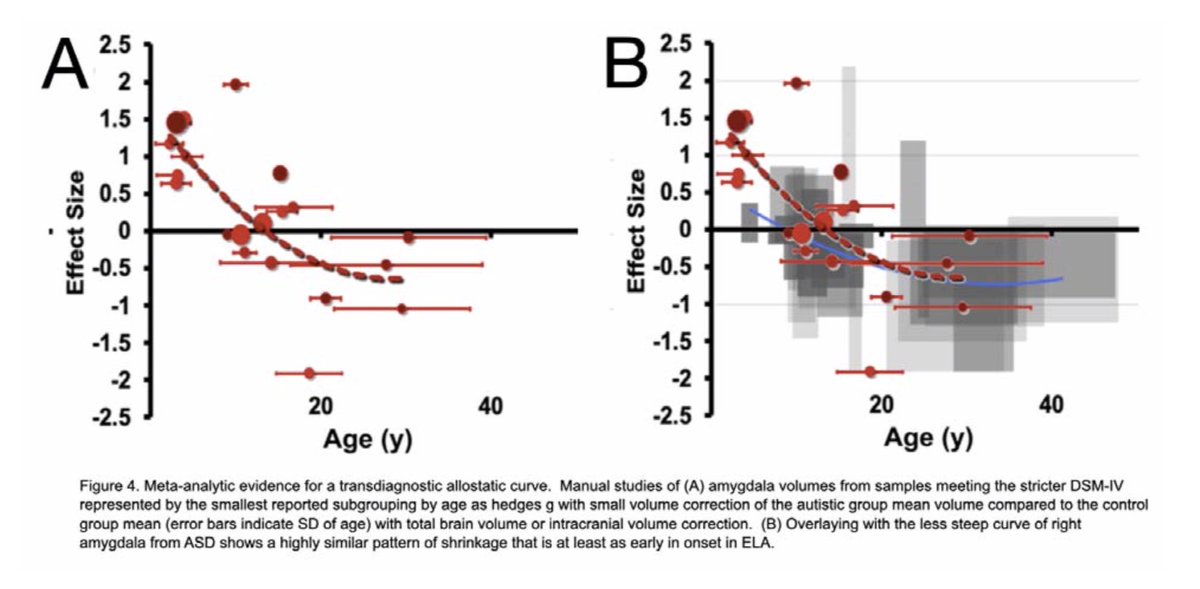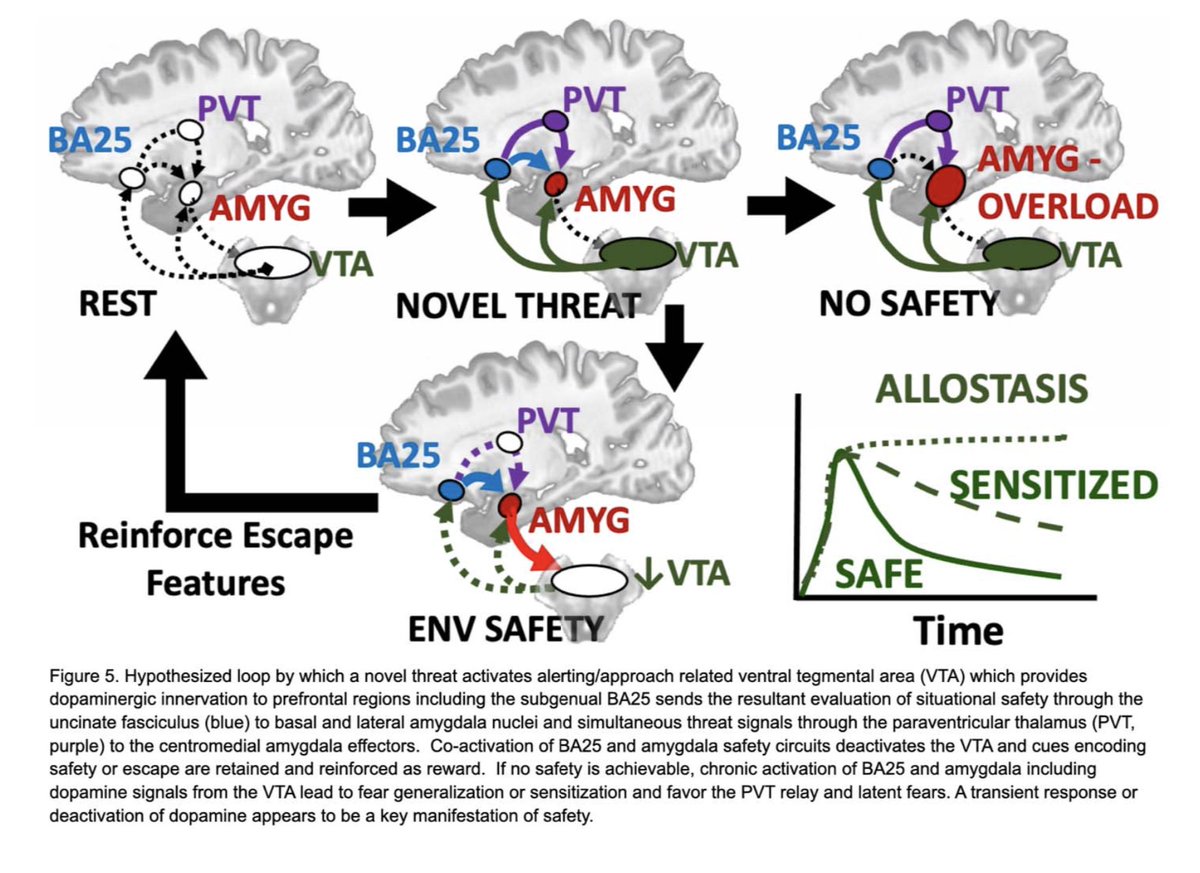
New theoretical paper about the impact of Early Life #Adversity on the Amygdala “Amygdala Allostasis and Early Life Adversity: Considering Excitotoxicity and Inescapability in the Sequelae of Stress“ Quick 🧵 /1 psyarxiv.com/7gcuw 

The amygdala is a heterogeneous group of clustered sub-nuclei; it plays a critical role in the evaluation of the emotional significance of incoming stimuli; and environmental experience has the potential to influence it due to amygdala's postnatal developmental trajectories /2 

Preclinical & human research suggests adversity impacts amygdala structure; however, the magnitude and directionality have been inconsistent. This may be due to amygdala volume exhibiting an "inverted-U" pattern of alterations after ELA. /3) 

The notion of an "inverted-U" pattern of amygdala alterations connects with McEwen’s notions of “allostatic load”. With stress and ELA exposure, we believe that increases in cellular complexity in the amygdala (e.g., higher dendritic branching; increased synaptogenesis) /4
leads to excessive excitation through amplified glutamatergic neurotransmission, and this cascades to excitotoxic damage, and eventually, cell death in the amygdala. There is interruption of the normal inhibitory/excitatory balance in the amygdala /5
And in the case of particularly extreme stress exposure, occurring for longer durations of time, such changes may give way to subsequent volumetric shrinkage. /6
This pattern of early overgrowth is mirrored in individuals with autism and first episodes of psychotic illness. We believe this to be a quantifiable transdiagnostic response to sustained evaluation of social threat (below a figure of amygdala vol in autism) #RDoC /7 

We believe this then can cause “learned helplessness”, essentially giving up in the face of a challenge (with increased dendritic spines and/or branching on amygdala neurons as a candidate physical mechanism for the generalization of fear itself) /8
Put another one- a small “dose” of inescapable stress, literally being trapped, has the hardest impact on the amygdala & induces lasting generalization of fear. RE: ELA, this connects to aberrant behavioral processes commonly seen (e.g., attachment & emotion processing issues) /9
However, the potential "neural embedding" of inescapability is not without counterweights. Specifically, we review research suggesting the possibility of a protective circuit by which: 1) a novel stimulus triggers dopamine release from the VTA, leading to... /10
2) activation of prefrontal and limbic regions including disinhibiting basolateral amygdala to alter the scope of fear, 3) safety and threat information is synthesized in subgenual BA25 and transmitted to primary cells in basolateral amygdala... /11
which 4) may conclude the threat is manageable and deactivate the entire loop by turning off the VTA. 

And I forgot that @brendonowicz -- my amazing colleague and co-author of this work -- is also on twitter!
• • •
Missing some Tweet in this thread? You can try to
force a refresh


